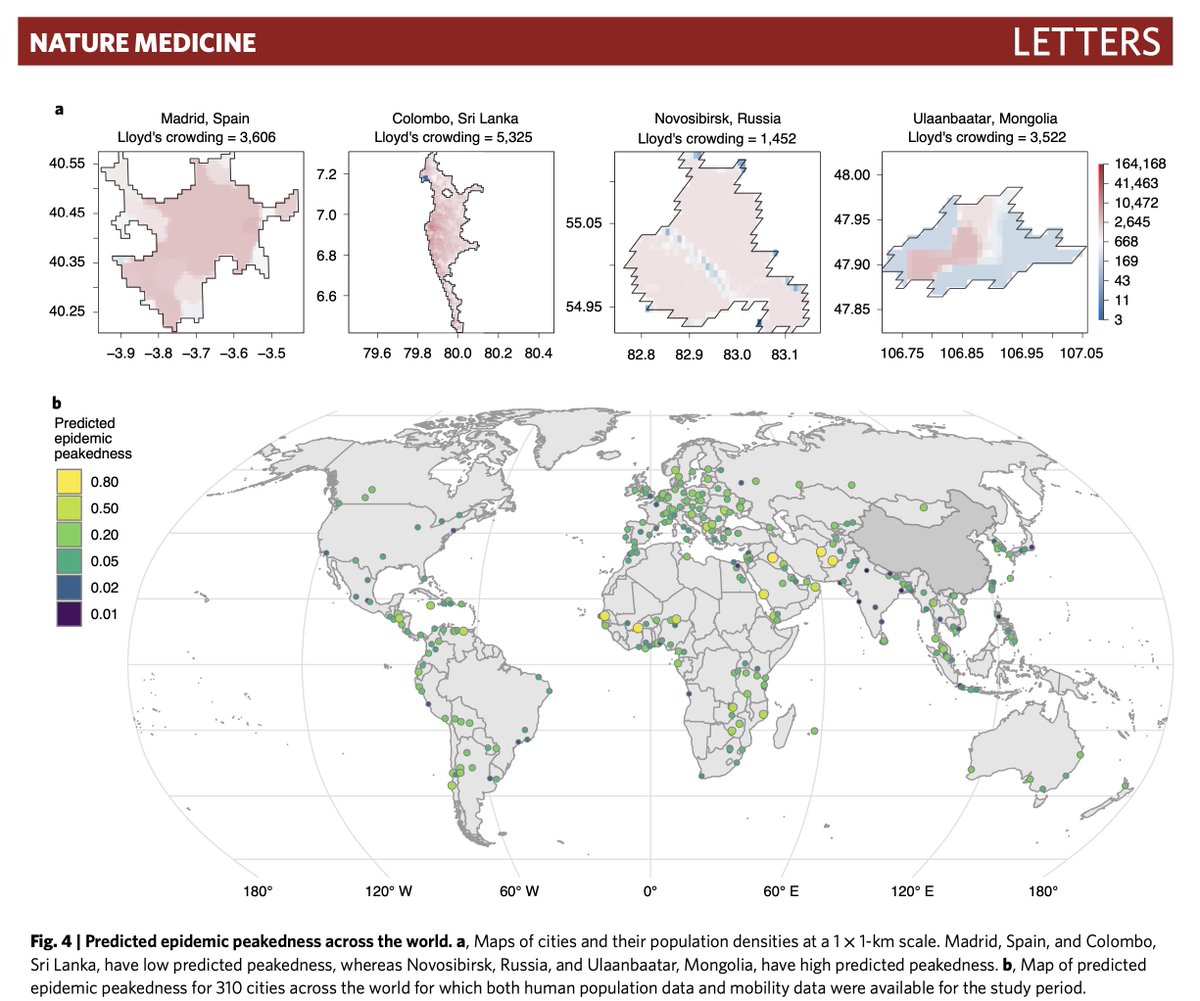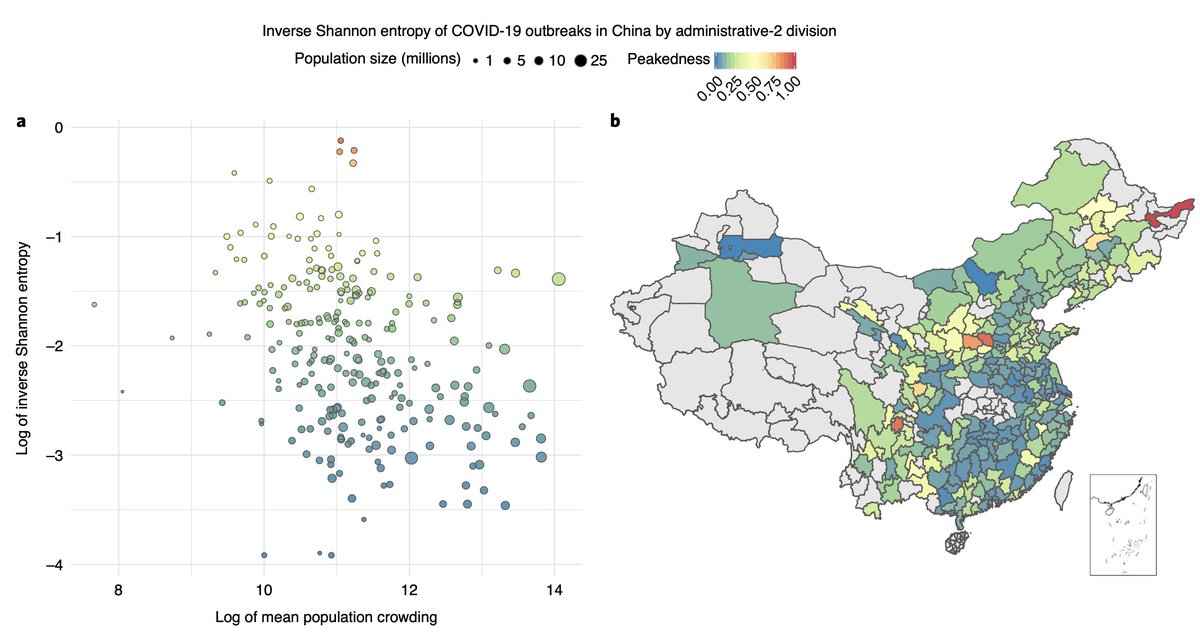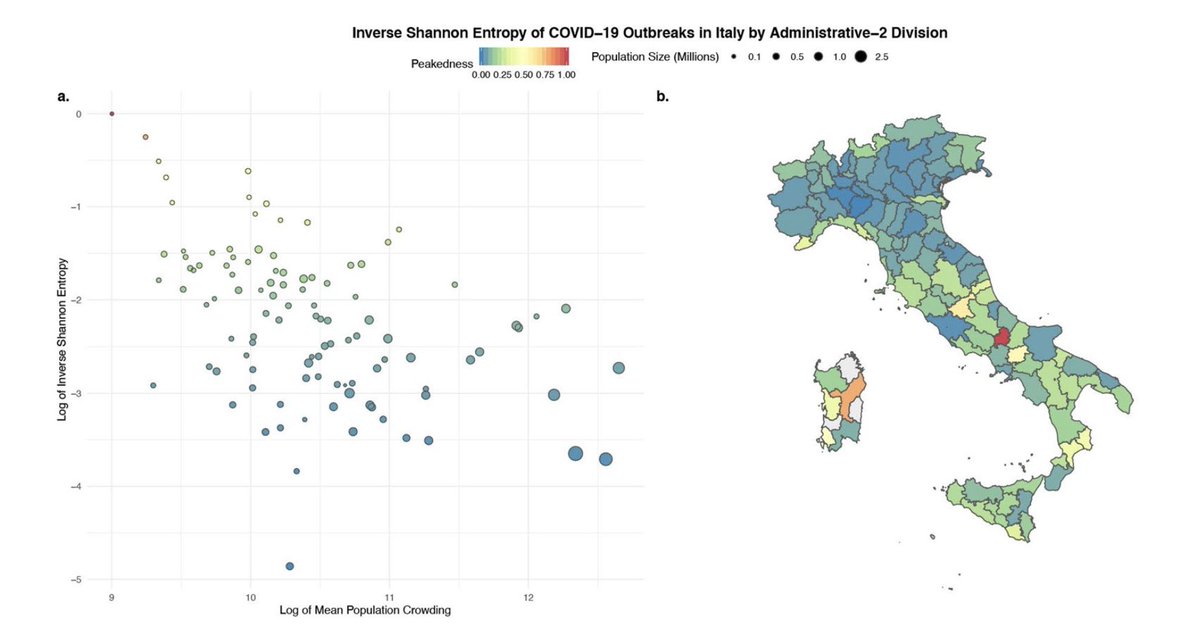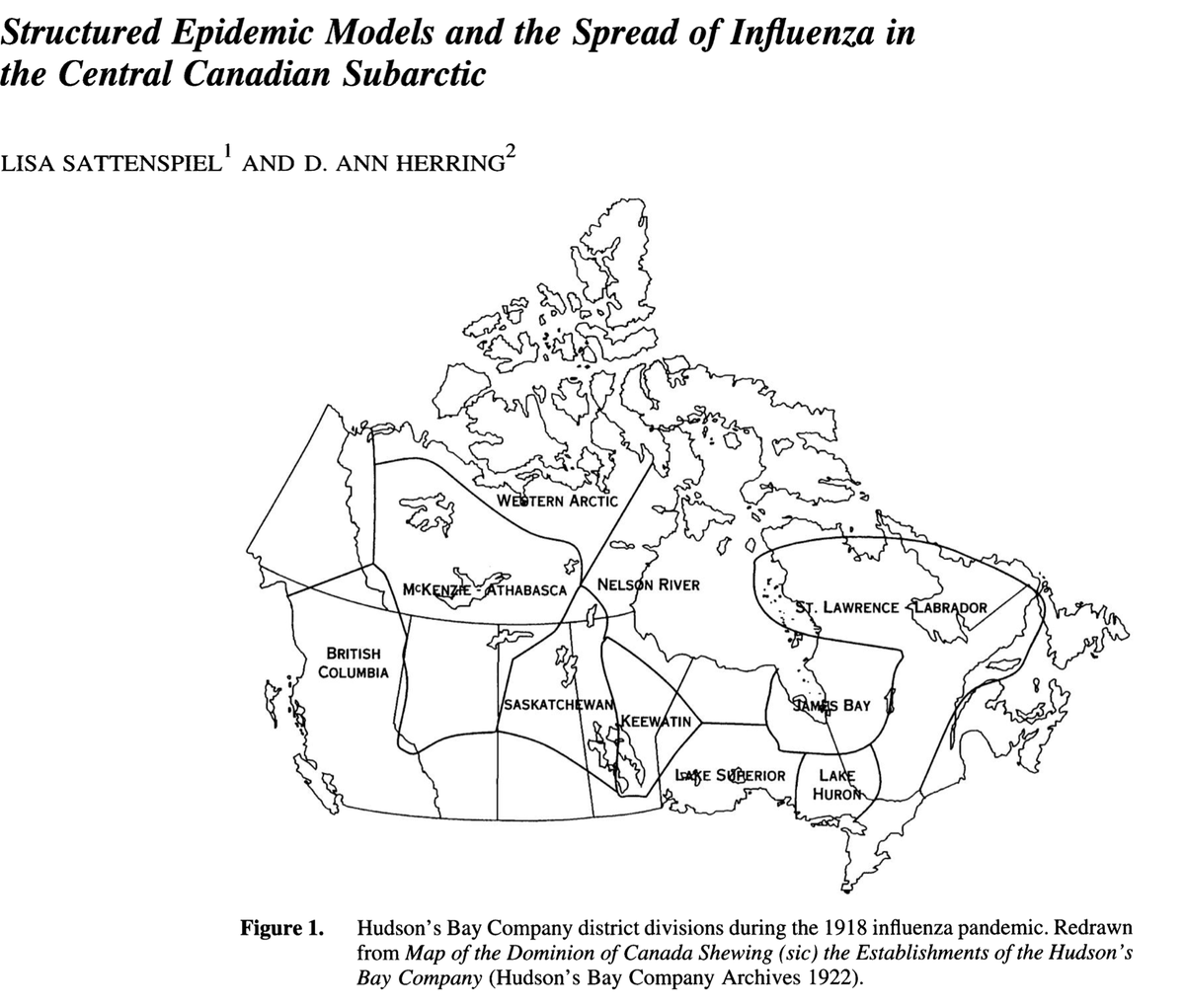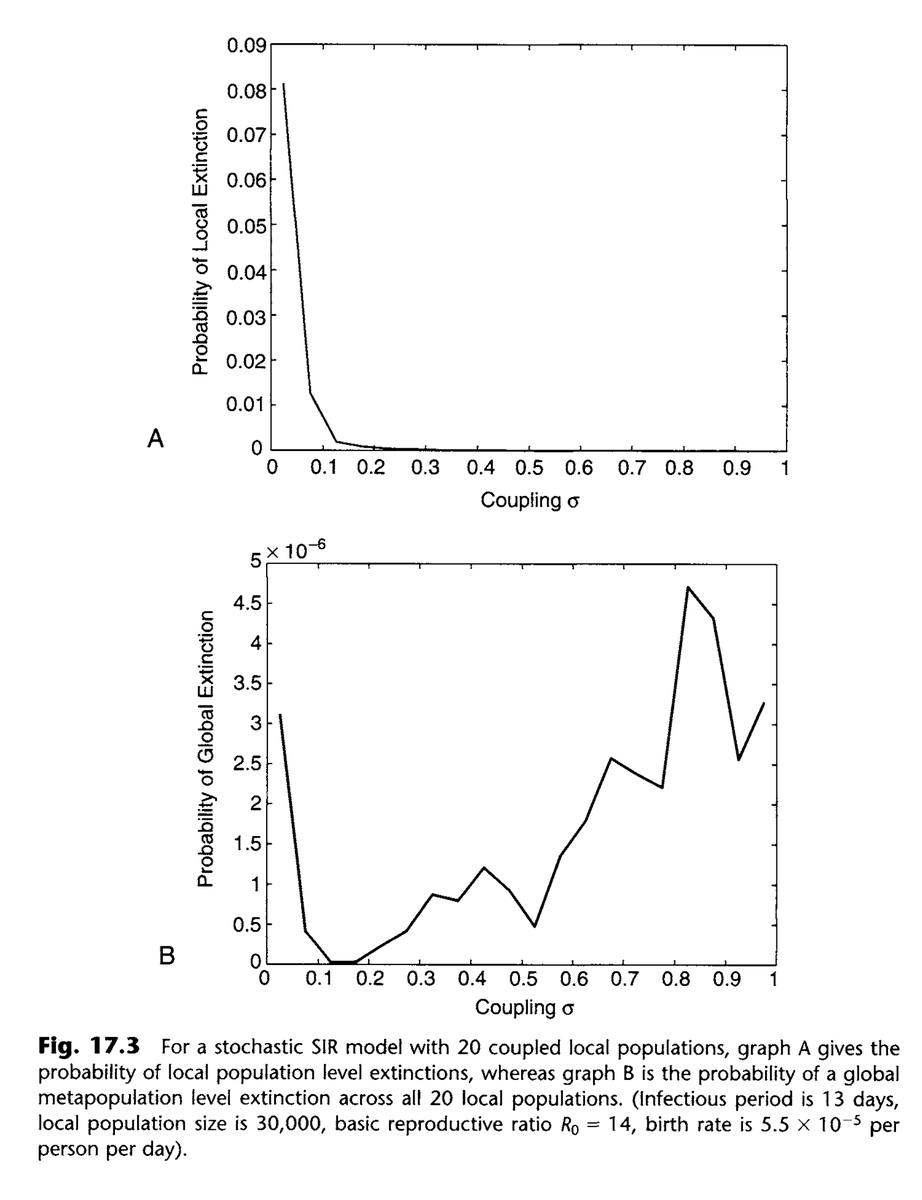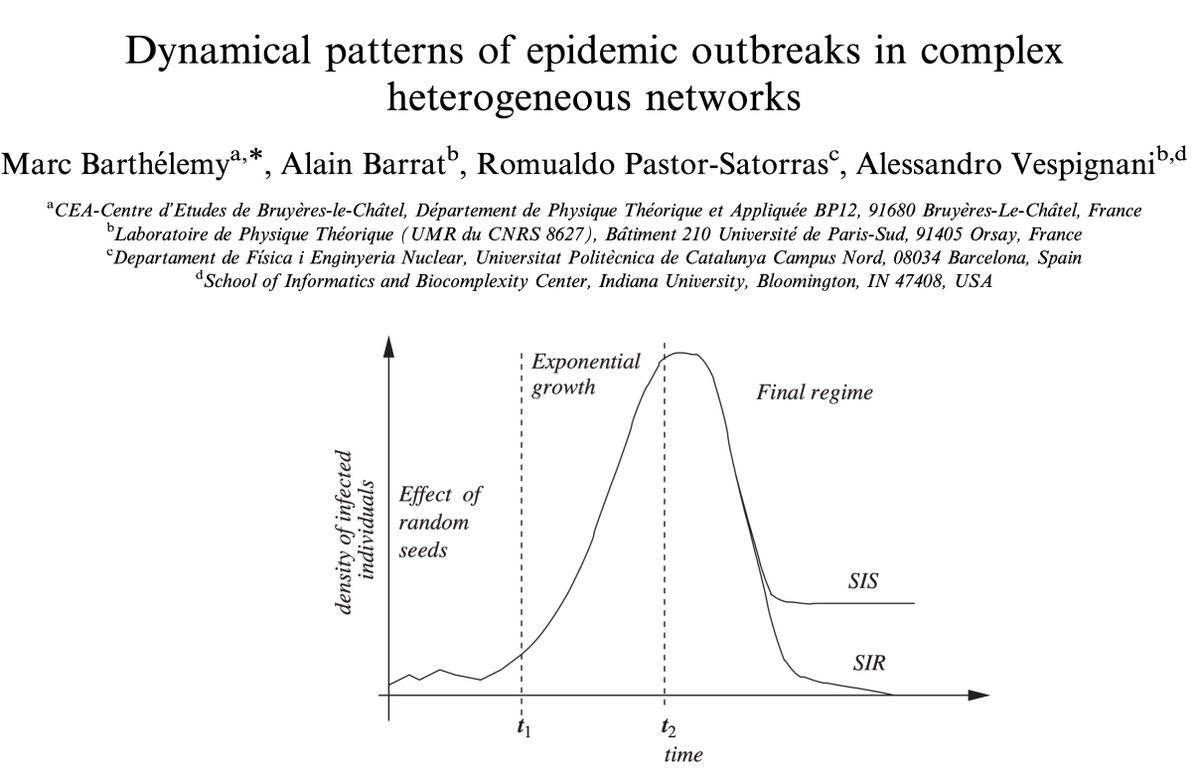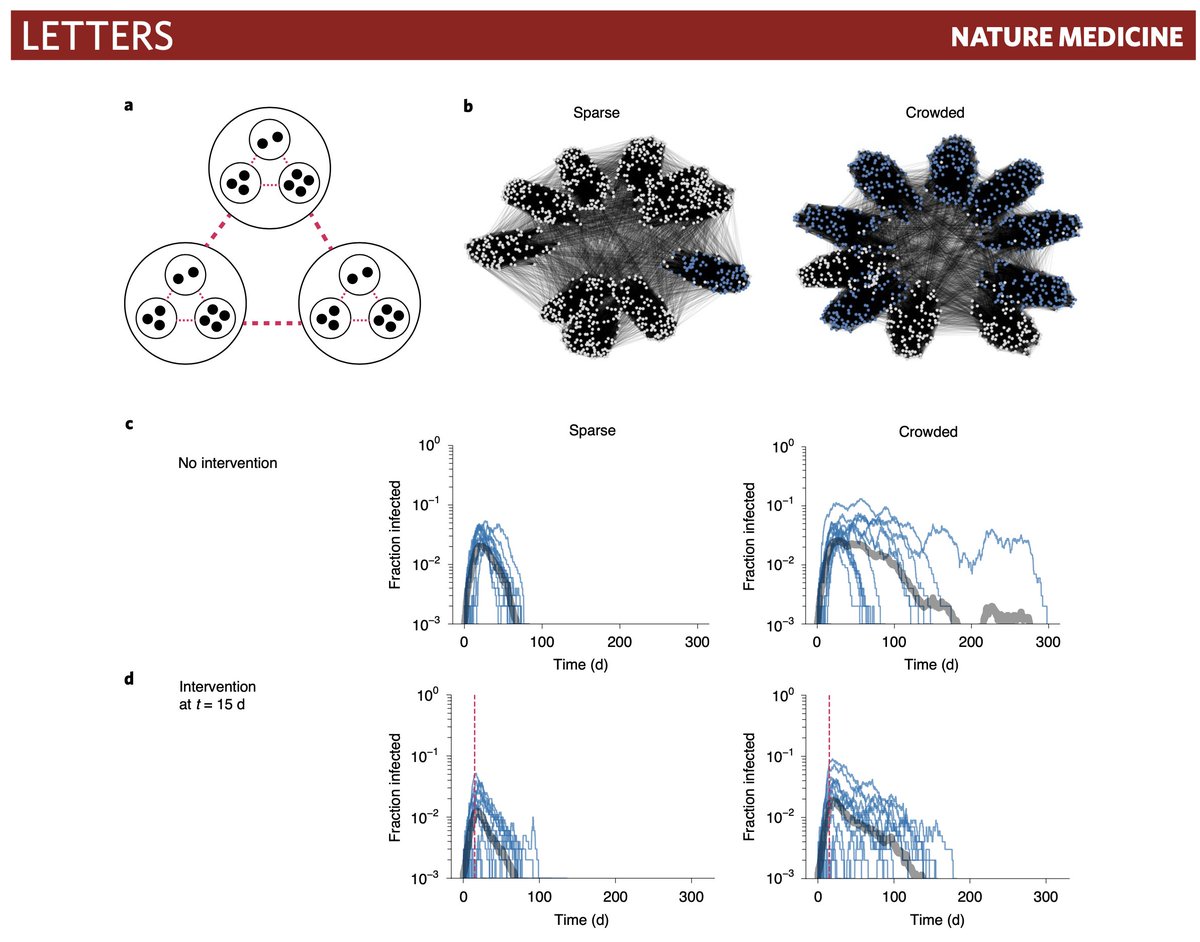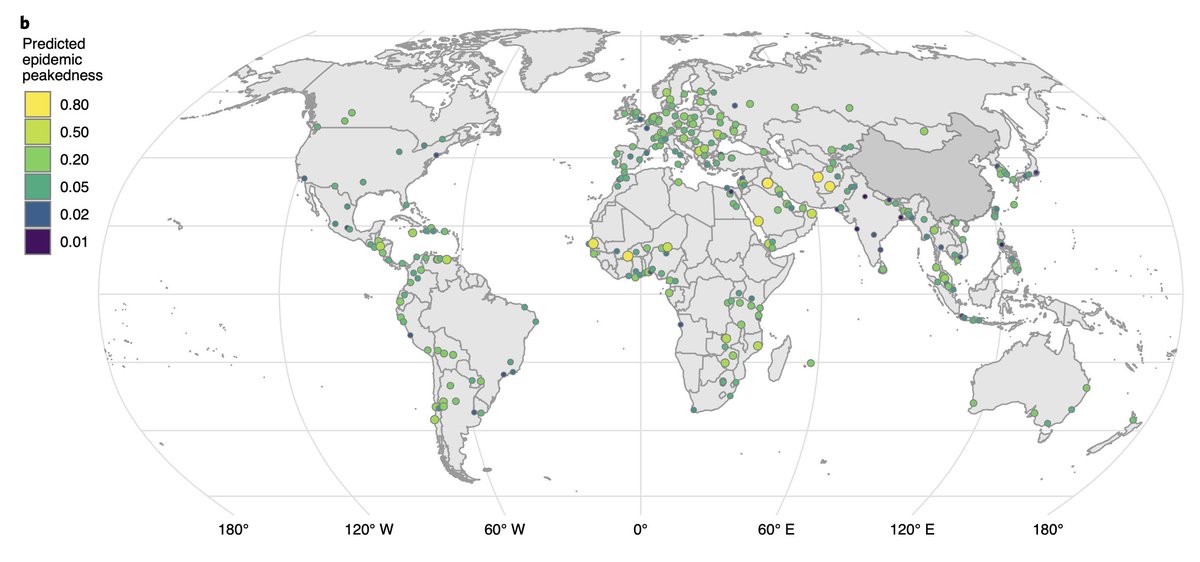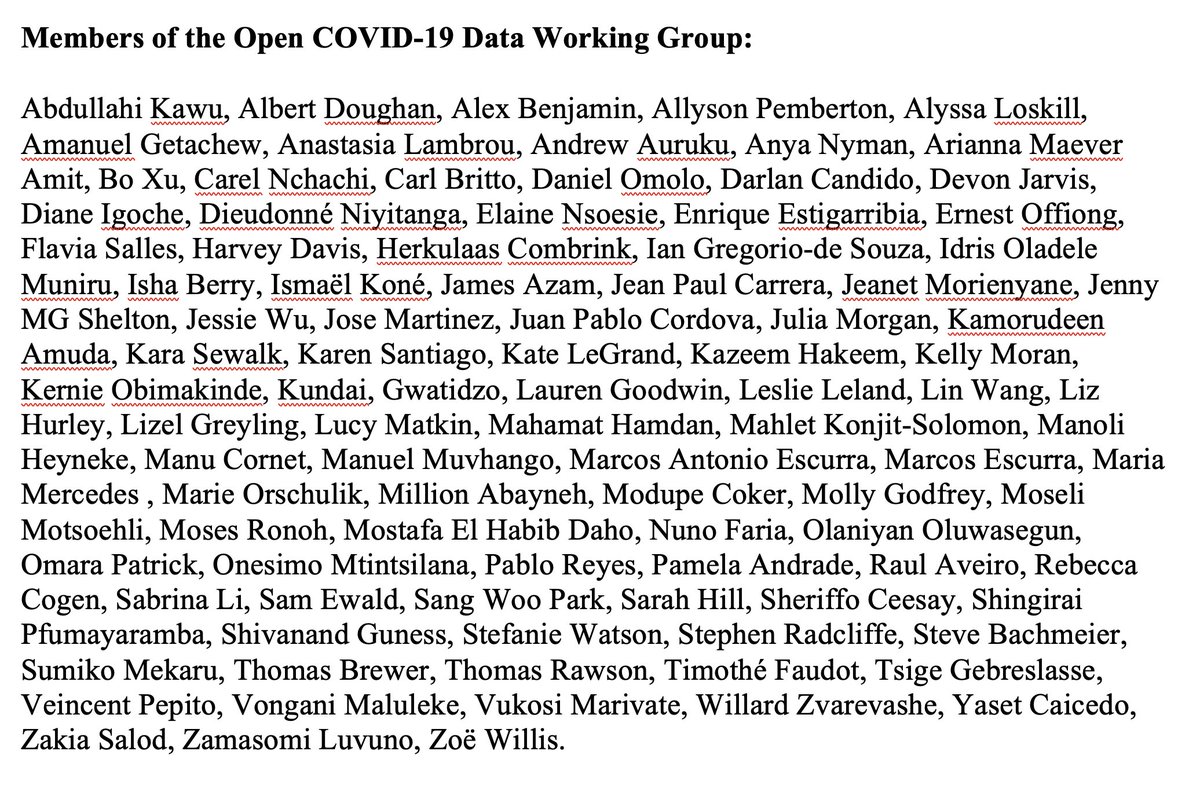The intensity of #COVID19 epidemics is heavily influenced by population structure. Our new paper analyzing high-resolution case, population, & mobility data from China and Italy is out today in @NatureMedicine. Co-led w/ @MOUGK & @EvolveDotZoo. 1/15 https://www.nature.com/articles/s41591-020-1104-0">https://www.nature.com/articles/...
The work brought together an international team of collaborators: B. Rader, @AnjalikaNande, @alison_l_hill, B. Adlam, @RCReinerJr, @davidmpigott, @B_Gutierrez_G, A. Zarebski, @munikShrestha, @johnbrownstein, @marciacastrorj, @chris0dye, H. Tian, @EvolveDotZoo, & @MOUGK 2/15
Using case data from the "Open COVID-19 Data Working Group" ( https://github.com/beoutbreakprepared/nCoV2019),">https://github.com/beoutbrea... paired with high-resolution population and mobility data, we showed that epidemics are sharper in lower-density areas and broader and longer in big cities. 3/15
A similar relationship was shown for influenza by Dalziel et al. ( https://science.sciencemag.org/content/362/6410/75)">https://science.sciencemag.org/content/3... and was predicted theoretically by @duncanjwatts, @robymuhamad, DC Medina, & @peterdodds in 2005 ( https://www.pnas.org/content/102/32/11157)">https://www.pnas.org/content/1... 4/15
One of my favorite papers of all time (Sattenspiel & Herring 98) couples data from fur traders during the 1918 flu pandemic in Canada to meta-population models to show a similar effect of hierarchical structure on the shape of epidemic curves. https://www.jstor.org/stable/41465622 ">https://www.jstor.org/stable/41... 5/15
The work builds off of classical theory in ecology about crowding, which was developed by Lloyd in the 1960s (See https://twitter.com/Ben_Sheldon_EGI/status/1313103441972154369?s=20).">https://twitter.com/Ben_Sheld... &, if you& #39;re interested in learning more, I& #39;d suggest this review by M. Wade, @clynfitzpatrick, & @curt_lively. 6/15 https://besjournals.onlinelibrary.wiley.com/doi/full/10.1111/1365-2656.12854">https://besjournals.onlinelibrary.wiley.com/doi/full/...
In addition, there& #39;s some foundational work on synchrony and meta-population structure by Keeling et al. who showed, among many other things, that coupling between populations can lead to global persistence of infectious diseases. 7/15 https://www.sciencedirect.com/science/article/pii/B9780123234483500192?via%3Dihub">https://www.sciencedirect.com/science/a...
And in the network science literature by Barthélemy et al., who studied epidemics in heterogeneous networks. https://www.sciencedirect.com/science/article/abs/pii/S0022519305000251">https://www.sciencedirect.com/science/a... 8/15
Back to our study, using a hierarchical network model and stochastic simulations (led by @alison_l_hill) we showed how #COVID19 will spread through different kinds of communities and how the effect of interventions *depends* on the population structure. 9/15
Similar results were found by @vcolizza & @alexvespi 2008 ( https://www.sciencedirect.com/science/article/abs/pii/S0022519307005991)">https://www.sciencedirect.com/science/a... and also @sanmelons et al. in 2011, where they demonstrated the complex dynamics of network structure and behavior on epidemics. 10/15 https://www.nature.com/articles/srep00062">https://www.nature.com/articles/...
Finally, we coupled our model from China and Italy with global mobility and population data to forecast the epidemic intensity of #COVID19 in cities across the planet. 11/15
If you& #39;d like to learn more about how our work may explain observed differences between urban/rural areas and between cities like
São Paulo and Manaus, read the incredible pieces by the @UniofOxford & @Northeastern News teams https://www.ox.ac.uk/news/2020-10-05-research-emphasises-need-covid-19-vigilance-tight-knit-communities">https://www.ox.ac.uk/news/2020... https://news.northeastern.edu/2020/10/05/why-does-covid-19-hit-hard-and-fast-in-some-places-but-not-others/">https://news.northeastern.edu/2020/10/0... 12/15
São Paulo and Manaus, read the incredible pieces by the @UniofOxford & @Northeastern News teams https://www.ox.ac.uk/news/2020-10-05-research-emphasises-need-covid-19-vigilance-tight-knit-communities">https://www.ox.ac.uk/news/2020... https://news.northeastern.edu/2020/10/05/why-does-covid-19-hit-hard-and-fast-in-some-places-but-not-others/">https://news.northeastern.edu/2020/10/0... 12/15
There& #39;s tons of great work coming out on #COVID19 and population structure, including: https://www.pnas.org/content/117/39/24180">https://www.pnas.org/content/1... and https://www.pnas.org/content/early/2020/09/23/2010651117.">https://www.pnas.org/content/e... Now is a very important time for this kind of research! 13/15
We are in-debt to the Open #COVID19 Data Working Group. And there& #39;s some really exciting news coming about this project. Follow @globaldothealth for updates. 14/15
And we were so fortunate to have flexible and dedicated funding support from @Googleorg, @EU_Commission H2020 program, https://brancoweissfellowship.org/ ,">https://brancoweissfellowship.org/">... @oxmartinschool, @Northeastern, @NUnetsi, the Beijing Science and Technology Planning Project, and the @NIH. 15/15

 Read on Twitter
Read on Twitter